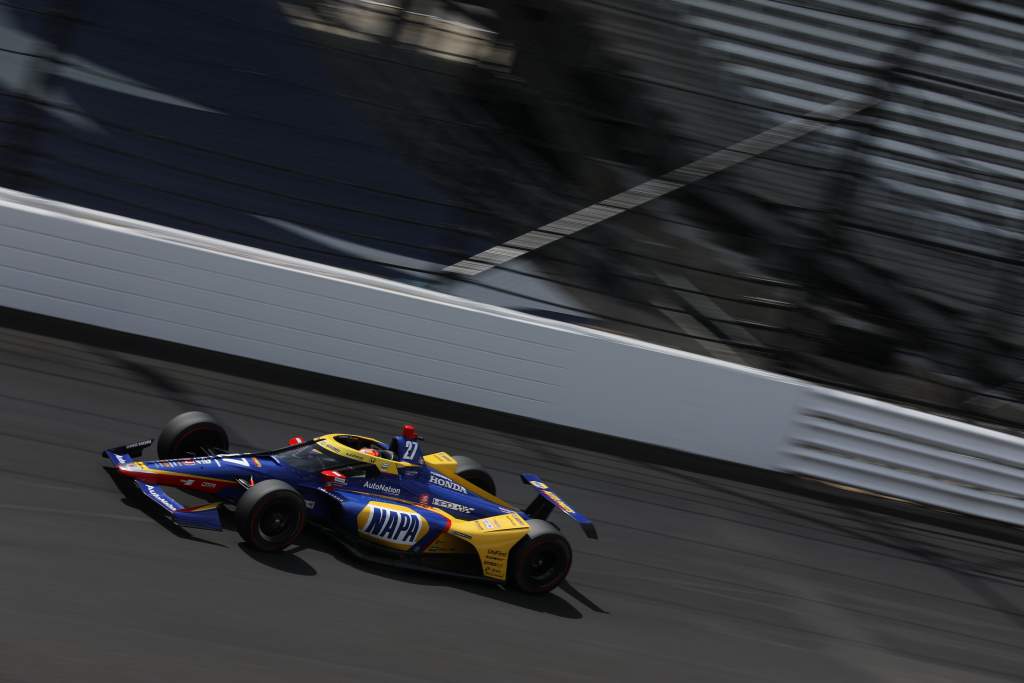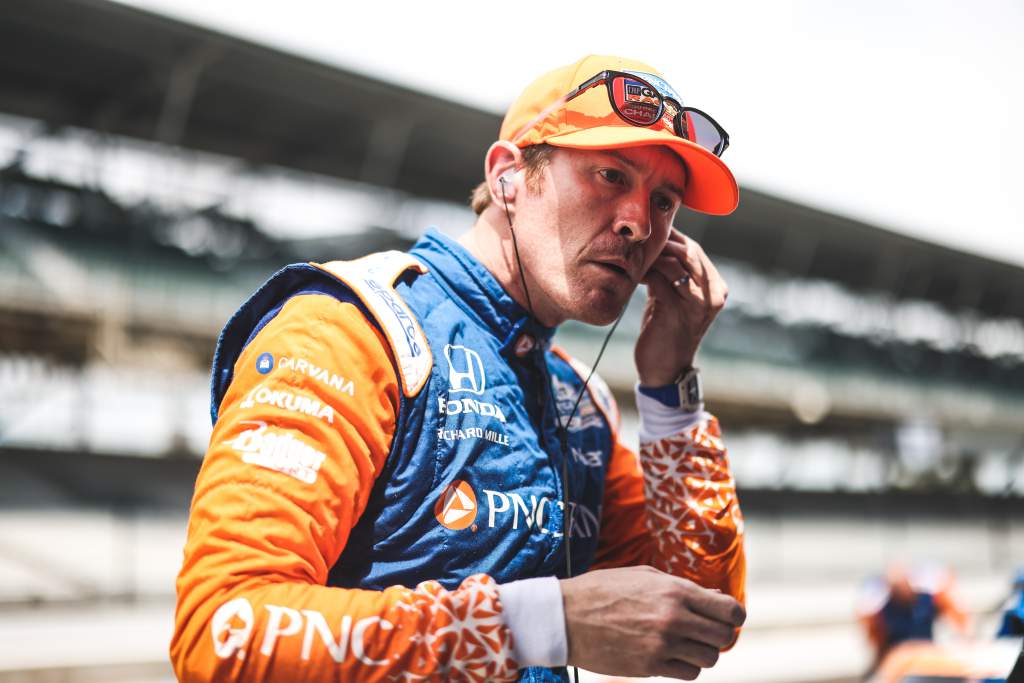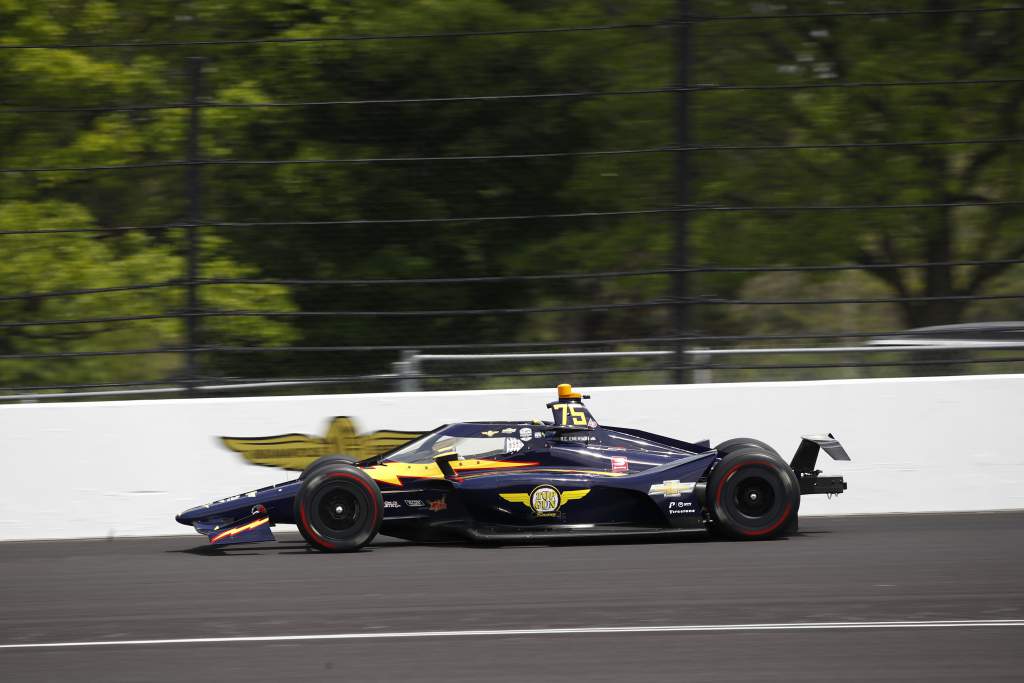until Abu Dhabi Autonomous Racing League

The Indianapolis 500 is an event steeped in tradition, and nowhere is this more clearly on display than in its unique qualifying format that sets the 33-car field.
So what happens and when?
All 35 cars entered have a chance of final changes to their cars on Saturday morning in practice from 0930-1030hrs local time.
Qualifying takes place 12 noon ET until 1800hrs. Every car is guaranteed at least one four-lap qualifying run, which is done alone on track.
The order of who qualifies when is decided by a random draw, which took place after ‘Fast Friday’ practice was completed.
In the order of the fastest laps in Fast Friday practice, each team is invited to randomly draw their place in the initial order of qualifying attempts.
The order has been set. Tomorrow, these 35 drivers will take the track to qualify for the 105th Running of the Indianapolis 500.#INDYCAR // #INDY500 pic.twitter.com/A5VzVJkrKJ
— NTT INDYCAR SERIES (@IndyCar) May 21, 2021
Temperatures have a huge impact on speed at Indianapolis. When it’s hotter it’s usually slower, so the random draw order can prove absolutely crucial depending on conditions. Most drivers favour qualifying early.
Each driver goes out and does a four-lap qualifying run in the order decided by the random draw, with their average speed across the whole run setting their position.
Providing there is time left once everyone has had one run, teams can attempt to improve on their laps on track in two different ways. They can line up in two queues, the “normal lane” or the “fast lane”, in the pits and wait for a clear track and to reach the front of either line.
View this post on Instagram
Cars in the “fast lane” have priority to go out on track first of the two lines when the track is clear, but drivers committing to that line forfeit their existing laptime. Therefore if they have an issue on the new attempt, they risk not having a time on the board after their run, or having a worse time than they started with if they fail to improve.
Those lining up in the “normal lane” keep their banker laptimes and can attempt to improve when they get their turn on track. The problem here is this is usually a busy lane and if you are far back in the order you may run out of time and miss the attempt to improve. It’s a question of risk versus reward.

At the end of the day, the drivers qualifying first to ninth in the order on Saturday reach the ‘Fast Nine’, which is a shootout that runs on Sunday to decide the prestigious pole and three-car front row plus the next two rows behind.
Drivers from 10th-30th have qualified, made the race and are locked in their starting position.
Drivers 31st-35th go into ‘Last Chance’ qualifying, where five cars attempt to fight for only three remaining spots on the back row of the grid.
Last Chance qualifying – for those cars 31st-35th – has traditionally been known as ‘Bump Day’ as the slowest car(s) are ‘bumped’ from the 33-car starting field.
Drivers in the Last Chance group (1100-1130hrs) and the Fast Nine (1130-1200hrs) get one more practice session each on Sunday. Drivers in these sessions get an extra set of tyres for those sessions and the respective practice sessions that come with them.
Last Chance qualifying takes place at 1315-1430hrs ET on Sunday. Every car – five this year – is guaranteed a four-lap run to fight to enter the Indy 500.
Once everyone has qualified, drivers can line up and try to improve but forfeit their existing time to do so, in effectively the same format as the “fast lane” on Saturday. There is no “normal lane” in the Last Chance event.

Some may remember Fernando Alonso failing to qualify for the 2019 event. This is an example of what can happen if you’re not fast enough in the Last Chance qualifying, you have to wait until the next year to attempt to make the Indy 500 again.
Equally as exciting as Bump Day is the Fast Nine shootout, where the pole winner is decided. This takes place at 1500-1545hrs ET on Sunday.
Also on offer in the Fast Nine are nine championship points for the pole winner, down to one point for ninth.
Unlike the other qualifying sessions, there’s no second chance here. You get one shot at your Fast Nine four-lap qualifying run.
The 33-car grid will then have the opportunity to practice on Sunday from 1700-1900hrs ET, and then the only other track time is the traditional ‘Carb Day’ practice session which is longer than it has been in the past at two hours, from 1100-1300hrs ET.
The favourites for pole and to get bumped

Fast Friday is usually a good sign of who to look for in qualifying for the Indy 500 – after all Marco Andretti was fastest on Friday last year and earned pole.
Very similar to last year, the Andretti and Ganassi teams appear to be very strong for Honda, Pato O’Ward was the only driver who looked to be frontrunning from Chevrolet’s Arrow McLaren SP, and Penske appeared to have a woeful day with Josef Newgarden its best driver with a lap good enough for 22nd.
None of the Penske cars performed well in the four-lap averages either, but I’m not sure they are as bad as they were last year and feel they still have something to give.
The favourite for pole this year appears to be the evergreen 40-year-old Scott Dixon, who failed to get a representative four-lap run in because of traffic but netted the fastest lap and has the virtue of qualifying first, in what should be ideal conditions.

Colton Herta appeared at home whether his car was on rails or out of control, and has bagged the most experience of changing conditions this week with 342 laps completed, which could give him and his Andretti team an element of versatility in the race. However, he starts qualifying tomorrow 30th in the queue to go out.
Herta’s team-mate Alexander Rossi was the fastest in the no-tow lap rankings on Friday which is also a good sign of qualifying performance, and the 2016 winner can never be ruled out even though he’s 31st in the qualifying order, one spot behind Herta.
Top four-lap average laps
1 Ericsson 231.949mph
2 Herta 231.726mph
3 O’Ward 231.522mph
4 Rossi 230.998mph
5 Wilson 230.844mph
Top five no-tow ranking
1 Rossi 231.597mph
2 Rahal 231.518mph
3 O’Ward 231.510mph
4 Dixon 231.502mph
5 Sato 231.379mph
It’s hard to look past an Andretti or Ganassi car on pole this year, with Stefan Wilson throwing the best four-lap average at the time of completing it into the mix for Andretti, while Marco Andretti and Ryan Hunter-Reay will make their attempts second and third respectively.
Ganassi’s three other cars behind Dixon – driven by Marcus Ericsson, Tony Kanaan and Alex Palou – all impressed on Friday.
There’s always the chance that teams are sandbagging in ‘Fast Friday’ but there’s not much to be gained by that, and plenty to be found by pushing the limits to find out what your car will do.
It’s more likely changes in conditions like temperature and wind direction could throw a curveball candidate into the mix, and there’s still one more practice for teams to work on their cars before qualifying.
If I had to make a more specific prediction, I’d say either Dixon or Rossi will bag pole.

Picking two cars not to make the field is never a nice thing to do, but it’s hard to look past the Top Gun Racing team making its debut with RC Enerson this year. It’s completed only 83 laps in practice over four days, and its best no-tow ranking time on Friday was almost 3mph slower than that of the 33rd-place car, two spots ahead. It’s done an admirable job given its lack of preparation time, but it’s got stiff and well established opposition.
Friday’s no-tow times, the bottom five
31 Bourdais 229.425 mph
32 Power 229.163 mph
33 Chilton 229.086 mph
34 Kimball 226.743 mph
35 Enerson 226.054 mph
Max Chilton has looked better in other days of practice but is flying the flag solo for Carlin. Yet, though Sebastien Bourdais and Charlie Kimball are part of a four-car Foyt entry, that hasn’t stopped that organisation from struggling this year so far.
Kimball and Enerson would have been my picks to miss the field before Friday so nothing changes there, although the single-car teams of Chilton and Dreyer & Reinbold’s Sage Karam aren’t immune from being dragged into that battle.
